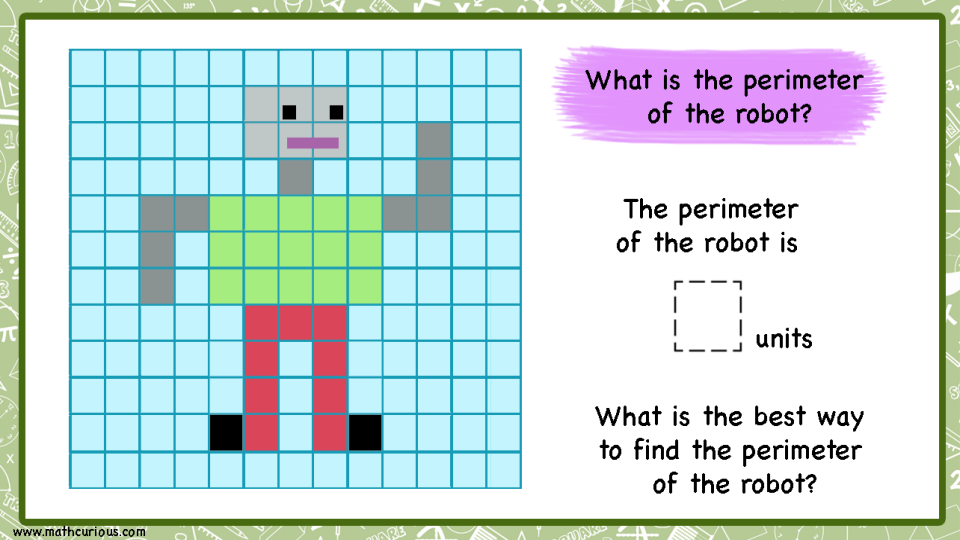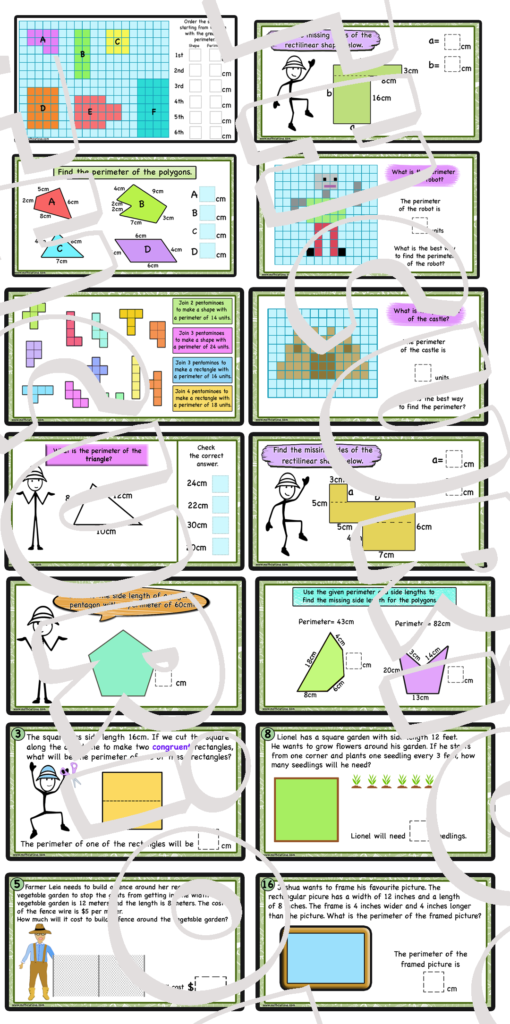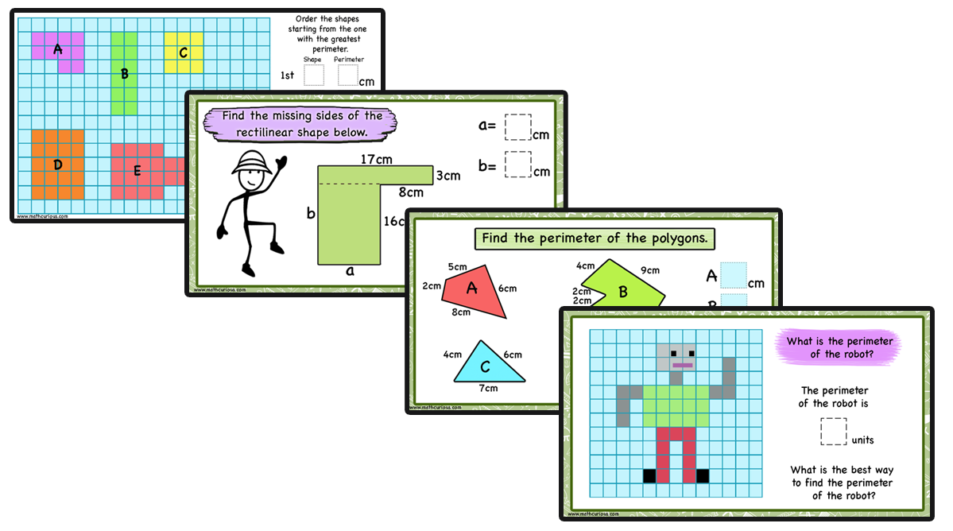Students start to learn about perimeter around grade 3, however, perimeter appears in all grades. Since the perimeter is the sum of all the sides of a 2d-shape, activities can take many forms, from measuring with crackers to algebraic expressions. Depending on the skill level of your students you can use the concept of the perimeter to provide rich tasks that challenge your students and get them thinking. Wonderful number talks can arise through the concept of perimeter. You can review shape properties, practice all operations, discuss equivalency, practice spatial reasoning, and so much more.
The concept of perimeter like the concept of area is used constantly in everyday life so students will already have an intuitive understanding of it. We need to use and link that understanding to the math activities in the classroom. Word problems that connect to real-life and come from the students’ experiences are a great way to do that. Visuals and manipulatives, discussions, and explorations with real objects are the first step to teaching perimeter.
Find our post and resources about area here
Below are some activity ideas and some print and digital activities to help with teaching perimeter.
- Find the perimeter of objects using different measurement units like pencils, lego bricks, string, pipe cleaners toothpicks, and more.
- Measure the perimeter of different polygons, and discover some of their properties. You can cut and label shapes for the students and have them categorize them. You can also use pattern blocks for many shapes.
- Draw a perimeter robot, person or any other shape. You can use lego bricks on a lego board and measure the perimeter in lego studs.

- Write/Draw your initial as a block letter and measure its perimeter. This activity can be done on graph paper as well and the students can color the tiles to form the letter.

- Use painter’s tape to make shapes on the floor. Let the students guess the perimeters, and then measure the perimeter using the tiles on the floor or a measuring tape.
- Measure the perimeter of pentominos, put them in order based on their perimeter, group the ones with same perimeter, join two or more together and see how the perimeter changes.
- Use geoboards to create shapes with a given perimeter.
- Measure the perimeter of outside areas using a measuring tape, a piece of string (one meter), number of steps, sticks, and more. For example, you can measure the perimeter of the basketball court with the students holding hands, the number of steps, using a stick, piece of string, and more. You can measure the perimeter of buildings’ bases, fields, playground border, tiled yard.
- Draw shapes with chalk outside. Try to guess the perimeter and see who is closer. If the shapes are not made with straight lines you can use a string to measure them. You can have each group to draw a few specific shapes with specific perimeters around the school and other groups locate them.
- Make polygons with straws, pipe cleaners, play dough and pasta noodles, sticks.
- Read books about perimeter like Perimeter, Area, and Volume by David Adler, Mighty Math: Cosmic Geometry by Edmark, Spaghetti and Meatballs for All! A Mathematical Story by Marilyn Burns
Below are some digital and print perimeter activities that you can use with your students. The resource includes 75 digital and 64 print activities to practice.
- Measuring the perimeter of polygons in different ways.
- Building shapes with a given perimeter.
- Finding the side length of shapes when the perimeter is given.
- Rectilinear shapes
- Comparing
- Word problems
- Puzzles
Here is a small sample,

As always here is a free version for you. The premium version includes 75 digital and 64 print activities.

